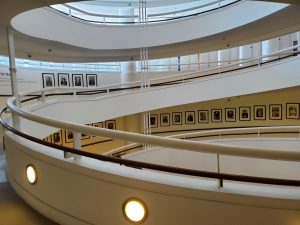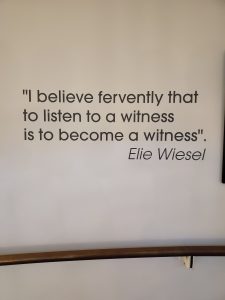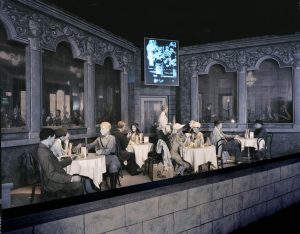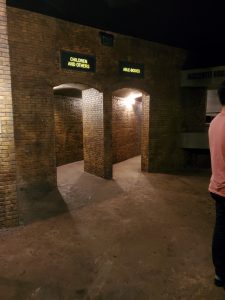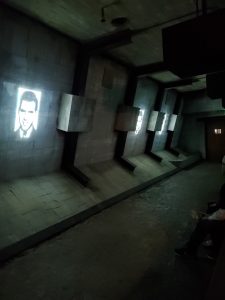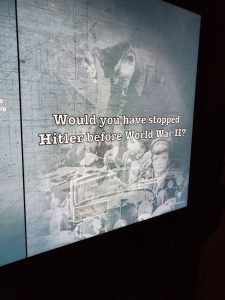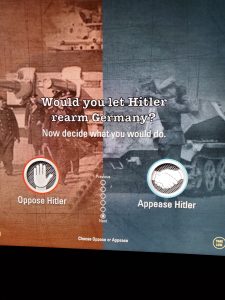Holocaust Exhibit
The Holocaust exhibit is a light and sound guided tour that starts with a sound presentation of the voices of the three people who created the exhibit. On the way to the exhibit, visitors must walk down a spiral ramp surrounded with photos of survivors, ending with a quote by Elie Wiesel:
Then, the visitor is traveled back to 1920’s Germany with the rise of the Nazi party and Hitler. For example, there is a scene that shows a popular café in Berlin and different people express their views of the growing Anti-Semitism:
After each person tells their story, the monitor reveals what happened to them during the war.
Winding through the tour, the years progress until we reach Hitler rise in power and his Final Solution plan. Here, visitors hear a meeting between Hitler’s right-hand men like Heydrich, Himmler, and Goebbels discussing how many Jews are left in Europe. A key artifact is Hitler’s letter, revealing his plan to exterminate Jews.
Furthermore, visitors reach a gate with broken bricks everywhere to simulate the Warsaw ghetto. After that, there is a glass window that displays the striped jumpsuit worn by the prisoners and a 3D model of the Auschwitz concentration camp. To get the next section, one must walk through a pathway, Able bodied on the right – Children and the elderly on the left:
Once one walks through the path, you immediately walk into a gas chamber, which displays a video of the horrible treatments brought about by Dr. Mengele:
The last part of the exhibit is a video presentation on the end of the Holocaust and the Allied invasion of the camps. Before exiting the doors, there is a interactive appeasement poll asking “Would You Have Stopped Hitler?” For each question, it asks if you would have appeased or opposed Hitler and what would happen based on the response someone chooses:
I very much enjoyed this exhibit, especially since it was self-guided by sound and video presentations. Also, I noticed that they put a heavy emphasis on children during the Holocaust. It is possibly a strategy to pull on the heartstrings of the visitors to make them empathize. Majority of the criticism of this exhibit is that there are no real artifacts from this time period. However, I believe it is meant to teach people and shed their ignorance, which can occur whether or not the artifacts or authentic or a replica.
